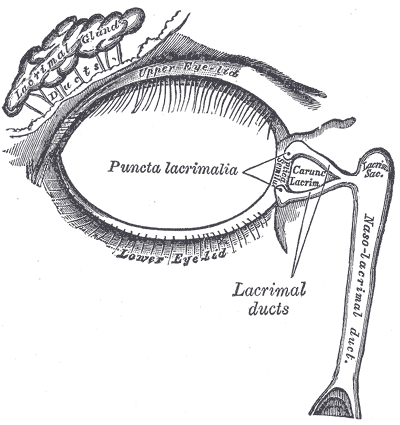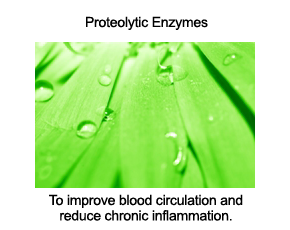You are here
Pimple In The White Part Of My Eye
Pink eye - also known as conjunctivitis - is sometimes accompanied by what appears to be a pimple in the white portion (sclera) of the eye.
Conjunctivitis often looks far worse than it is for the simple reason that you have a close-up look at inflamed and ruptured vessels. All that redness and mishmash of engorged blood vessels looks just as bad under your skin when you experience a bruise, but with a bruise, you don't actually see the goriness.
Add the accumulation of discharge - sometimes green and yellow-colored - that sometimes comes with conjunctivitis, and it makes perfect sense that most of us worry more than necessary, especially when one of our little ones wakes up with pink eye.
And what to do when conjunctivitis is accompanied by what appears to be a pimple in the white portion of the eye?
My experience has been that such pimples are not usually actual pimples. Rather, they are often a mirage, created by inflamed blood vessels that surround an unaffected circle of white sclera, giving the appearance of pus that is typical of a pimple.
This is not to say that pimples can't form in and around the eye. But most commonly, true pimples will occur closer to the eyelid at the base of an eyelash, or along the inner lining of the eyelid; these areas are lined with sebaceous and sweat glands, and when infected, you will see a red bump or a pimple (typically called a sty).
Cysts can also form in these areas, and some cysts don't easily go away on their own, so it's important that you always consult with a qualified health care practitioner to get a proper diagnosis.
But in the case of a pimple in the white of the eye, take a close look in the mirror with plenty of light, and chances are good that the pimple is nothing more than engorged blood vessels surrounding a small circle of healthy white sclera.
An ophthalmoscope makes is easy to distinguish between a mirage created by engorged blood vessels versus a true pimple or cyst, but where you don't have easy access to a practitioner with an ophthalmoscope and you can't get a close enough look at the affected area to see whether a true pimple exists or not, try using a magnifying glass with as much natural light as possible.
Most cases of conjunctivitis resolve on their own within a week or so, and as the vessels in the sclera heal and your immune system clears away infection-related debris, you'll likely be pleasantly surprised to see the pseudo-pimple disappear quickly.
Where pink eye involves a green or yellow discharge, it can be helpful to use an over-the-counter antibiotic eye drop. Because conjunctivitis is typically highly contagious, I generally suggest putting one drop in both eyes (even when only one eye is infected) daily until the redness dissipates, and to continue for a couple of days even after the eyes return to looking normal.
 When applying eye drops, it's best to wash your hands with soap and water, to apply the drop, then immediately apply gentle and firm pressure to the area just under the inner part of your eye (just beside the top of your nose), and to look up, down, and side to side for about 20 seconds to optimally distribute the antibiotic eye drop. Applying pressure to the area just under the medial portion of your eye will block off your nasolacrimal duct, which will allow the eye drop to fully coat your eye rather than drain away without doing its job.
When applying eye drops, it's best to wash your hands with soap and water, to apply the drop, then immediately apply gentle and firm pressure to the area just under the inner part of your eye (just beside the top of your nose), and to look up, down, and side to side for about 20 seconds to optimally distribute the antibiotic eye drop. Applying pressure to the area just under the medial portion of your eye will block off your nasolacrimal duct, which will allow the eye drop to fully coat your eye rather than drain away without doing its job.
If you or your child experience frequent bouts of conjunctivitis and you don't know why, one thing to consider is how much chlorine you're being exposed to. Chlorine in tap water isn't typically enough to cause problems, but higher concentrations of chlorine in public swimming pools can be enough to break down the protective layers of lubrication that exist over the eyes, and in the moments following breakdown of this lubrication, the eyes can be vulnerable to getting infected if they are rubbed.
Hope this information proves to be helpful.
If you have any questions or comments, please feel free to submit them via the comments section below.
Related Posts:
Try Frequent Blinking for Healthier Eyes and Better Vision
How to Reduce Eyestrain and Promote Optimal Vision
Vision Support - A Professional Grade, Whole Food Supplement that Promotes Optimal Vision
Join more than 80,000 readers worldwide who receive Dr. Ben Kim's free newsletter
Receive simple suggestions to measurably improve your health and mobility, plus alerts on specials and giveaways at our catalogue
Please Rate This
Related Posts | |||











Comments
Daughter used to get pink eye ALL the time!
My daughter used to get pink eye all the time as a young child, mainly after visiting some type of play area. I got so tired of using the drops from the doctor. Wrestling with her to get the drops in made me feel terrible afterwards. In 2006 I found a list of alternative treatments and promptly stocked up on dried Calendula petals. I made the Calendula into a tea and used a clean cloth(I cut up a flour sack dishtowel that I could discard after) to hold it on the infected eye(s). My daughter liked the soothing feeling of warm tea on her eyelid and although she didn't like that some of it had to get in her eye she definitely prefers that to the drops. Also, the Calendula worked much faster. Sometimes within hours the redness was gone and always by the end of the day. It worked for us and she rarely gets pink eye anymore:)
I had pink eye once...
I was a teenager, I woke up one morning and my eye was stuck closed from unexpected goop. I washed it open in water. My Mom did not freak out, and didn't do anything for it. It resolved itself in a matter of days. The only treatment I gave myself was washing the goop out when it got annoying.
EYE goop
Three cheers for you! I too have learned to listen to my "inner doctor" who seems to know the simplest and best treatment for everything and also prompts me when I need professional advice , etc.
Regards,A Friend